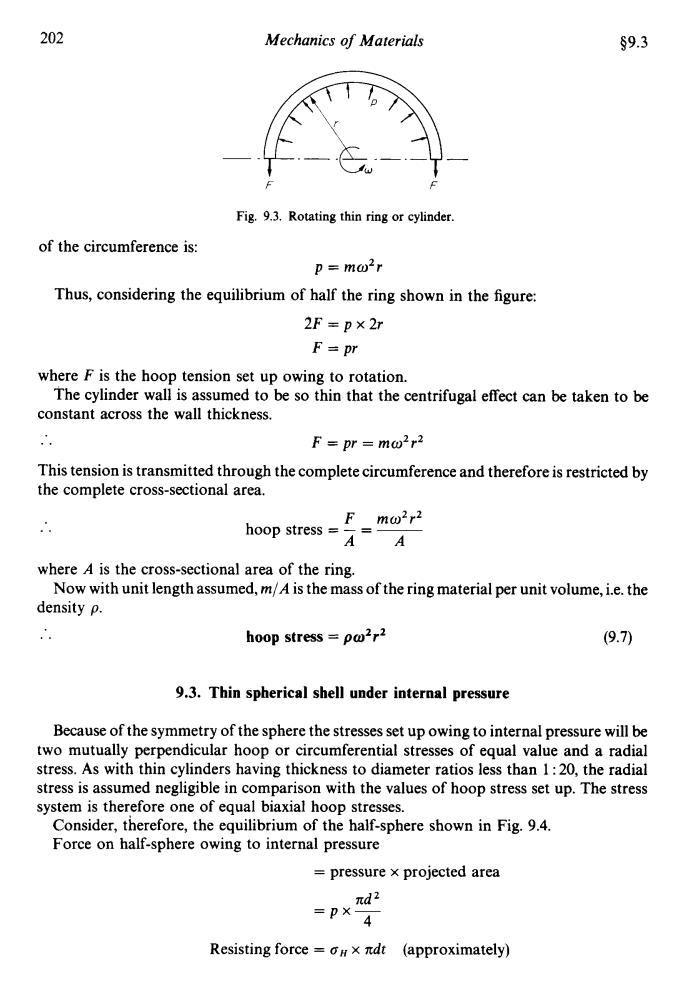正在加载图片...

202 Mechanics of Materials §9.3 Fig.9.3.Rotating thin ring or cylinder. of the circumference is: p=mω2r Thus,considering the equilibrium of half the ring shown in the figure: 2F=p×2r F=pr where F is the hoop tension set up owing to rotation. The cylinder wall is assumed to be so thin that the centrifugal effect can be taken to be constant across the wall thickness. F=pr =mo2r2 This tension is transmitted through the complete circumference and therefore is restricted by the complete cross-sectional area. hoop stress F mo2r2 AA where A is the cross-sectional area of the ring. Now with unit length assumed,m/A is the mass of the ring material per unit volume,i.e.the density p. hoop stress =po2r2 (9.7) 9.3.Thin spherical shell under internal pressure Because of the symmetry of the sphere the stresses set up owing to internal pressure will be two mutually perpendicular hoop or circumferential stresses of equal value and a radial stress.As with thin cylinders having thickness to diameter ratios less than 1:20,the radial stress is assumed negligible in comparison with the values of hoop stress set up.The stress system is therefore one of equal biaxial hoop stresses. Consider,therefore,the equilibrium of the half-sphere shown in Fig.9.4. Force on half-sphere owing to internal pressure pressure x projected area nd2 =卫X 4 Resisting force =#x ndt (approximately)202 Mechanics of Materials $9.3 F F Fig. 9.3. Rotating thin ring or cylinder. of the circumference is: p = mo2r Thus, considering the equilibrium of half the ring shown in the figure: 2F=px2r F = pr where F is the hoop tension set up owing to rotation. constant across the wall thickness. .. This tension is transmitted through the complete circumference and therefore is restricted by the complete cross-sectional area. The cylinder wall is assumed to be so thin that the centrifugal effect can be taken to be F = pr = mo2r2 where A is the cross-sectional area of the ring. density p. Now with unit length assumed, m/A is the mass of the ring material per unit volume, i.e. the .. hoop stress = po2r2 (9.7) 9.3. Thin spherical shell under internal pressure Because of the symmetry of the sphere the stresses set up owing to internal pressure will be two mutually perpendicular hoop or circumferential stresses of equal value and a radial stress. As with thin cylinders having thickness to diameter ratios less than 1 : 20, the radial stress is assumed negligible in comparison with the values of hoop stress set up. The stress system is therefore one of equal biaxial hoop stresses. Consider, therefore, the equilibrium of the half-sphere shown in Fig. 9.4. Force on half-sphere owing to internal pressure = pressure x projected area nd2 =px4 Resisting force = oH x ltdt (approximately)